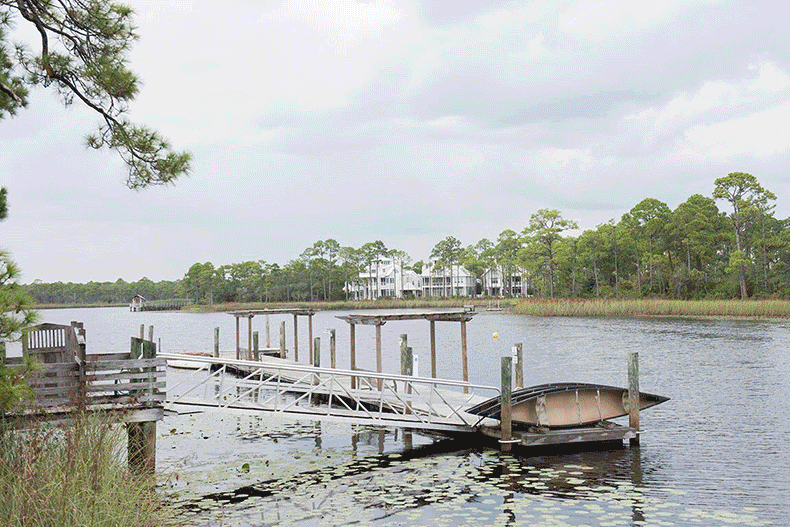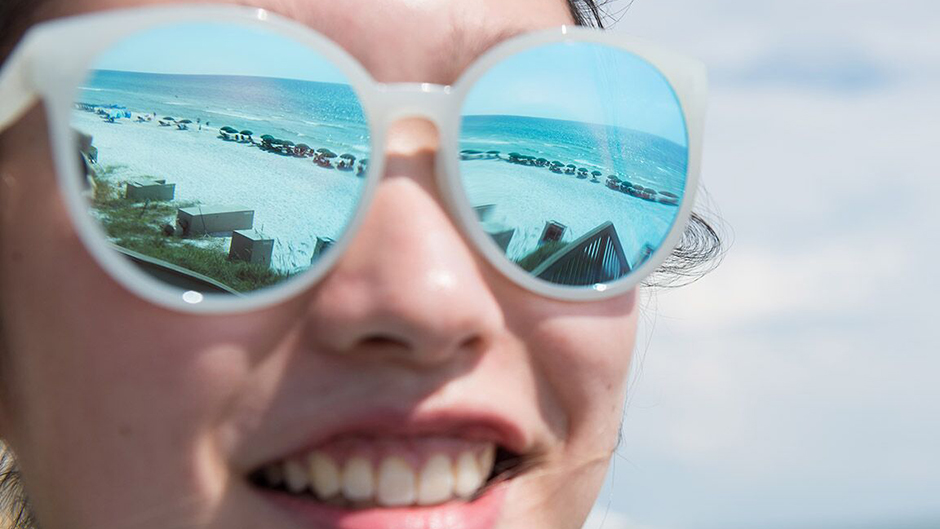Sponsored by the School of Architecture (U-SoA), a multi-disciplinary group of 80 students, faculty and staff from the University of Miami traveled to the northeastern coast of the Gulf of Mexico for an immersive-learning experience to analyze four newly built coastal settlements designed with best practices in resiliency and sustainability. The Seaside Annual Legacy Tour is highly regarded by students, alumni, and professionals for its contribution to their own development as well as its illumination of the foundational work in transformational urban design established at the School of Architecture. Faculty members from diverse professional and pedagogical backgrounds guided students from the Bachelor of Architecture, Master of Urban Design, Master of Architecture, and Master of Real Estate Development and Urbanism programs through sessions, tours and workshops with real estate stakeholders, architects, and urban designers addressing issues in the various disciplines as well as larger ecological and sociological concerns.
Planned and designed by then DPZ partners, Andres Duany and Elizabeth Plater-Zyberk (currently Malcolm Matheson Distinguished Professor of Architecture and Director of the urban design program), with developers Daryl and Robert Davis (currently an Advisory Board member for the real estate program), Seaside represents a pathbreaking project in its radical alternative to Florida’s conventional development patterns. Foregoing the dominant mode of ocean-front, single-use buildings, Seaside proposed a walkable, mixed-use neighborhood infused with public space and civic buildings to provide a powerful sense of place. Seaside’s financial success launched reconsideration of development models as well as a challenge to conventional planning and zoning methods and is considered a pivotal transformation in urban theory linked to the foundation of New Urbanism, a movement encompassing multiple disciplines to provide vital alternatives to suburban sprawl and urban disinvestment.
Seaside’s approach to the natural landscape through preservation of dunes and conservation of local plant communities also offers a case study in climate change impacts. The towns of Seaside, Rosemary Beach, Alys Beach (DPZ), and Watercolor (Cooper Robertson) are surrounded by state parks preserving bodies of water, natural bluffs, and forests alongside white sand beaches, made of quartz particles, carried to the sea by the Apalachicola River. The founders and planners of each townscape established an ongoing commitment to seek a balance favoring natural resources, green systems of water management, conservation of indigenous flora and fauna, and local building materials and crafts, resulting in prosperous communities, which illustrate the potential for responsive building in fragile conditions.

Faculty and Students participating in the Seaside 2018 Annual Legacy Tour shared their experience...
Gilda Santana, Head of the Paul Buisson Architecture Library.
I play an essential role in supporting student and faculty research in the built environment. The town of Seaside is one of the sites for which I am frequently asked to provide information. Fall 2018 marks the first year that I have had the opportunity to participate in the legacy trip. It was incredibly useful and delightful to me, as an information professional, to listen to learned faculty cite the history and lessons learned from the development of the towns we visited, and most importantly, envision the connectivity to our school’s pedagogical foundations in town planning, architectural design, real estate, and in the promotion of civic responsibility and respect for the natural environment. Most impressive was the impact that the first-hand experience of visiting the sites had on activating the students’ critical thinking and design skills as evidenced by the questions they asked and the sketches they produced. For myself, the trip was an essential learning experience and opportunity to engage with both students and faculty at various levels.
Jason Ballantyne. Sophomore BArch, Charlotte, NC.
The opportunity to document, explore, and live in community as unique as Seaside was such an outstanding experience for me. The energy of the town and the purity of its design are things one cannot capture in a photo. Being there was definitely worthwhile. I’m very grateful to the U-SoA for making this incredible trip possible!
Thomas Long. Sophomore BArch, Newport Square, PA.
I believe this trip was able to teach me how to create a town that can easily bring the community together. I was able to learn how convenient a place can be when daily needs are within walking distance. This experience brought me to a place I was not familiar with, since I have lived in suburban sprawl all of my life. I now understand how/why the decisions that were made within the town’s design. I know that this gained knowledge in my education will translate into the work I will do in the future.
Haochen Su. Sophomore, BArch, Beijing, China.
Going on this trip is the first time I go to a resort town in the US. I felt the relaxing atmosphere while being there. It provided me with first-hand knowledge of what exactly is a walkable community. It was easy to get everywhere by foot.
Cecilia McCammon. Sophomore, BArch, Miami, FL.
Our trip was an incredible opportunity to learn about town design and brought to life the concepts from our urban design course. Suddenly, we were walking on the streets that our professors had just sketched and admiring the houses they had designed. It was an immersive experience that changed my perception of urbanism.
Marina Colón. Sophomore, BArch, Orlando, FL.
During the Seaside trip this past semester, I learned much about how people are able to interact in traditional neighborhoods. Rather than dwellings being just a place in which to live, with the proper design methods, one can prompt families and homeowners to connect and be part of how the community functions.
Jackeline Del Arca. Sophomore, BArch, San Pedro Sula, Honduras.
One thing that impressed me the most during this trip was the way its design made the community bond stronger. While going to the town center Friday night, a movie was playing on a giant screen, kids were running around, people were laughing and enjoying their time. Magical moments like this are unlikely scenes. Architecture and city planning really do influence our lifestyle and the way we get to connect with the people that surround us.
Joshua Kaufman, Sophomore, BArch, Miami, FL
The trip taught me that good architecture and design can really change the world. It reminded me to always design for a reason, to always understand the environment around you, and understand how to build accordingly.
Shaun Mosheim, MRED+U, Miami, FL
It was great to actually walk in these seaside communities after reading and discussing them in class. The town serves as a perfect example for incremental development; from the retail to the residential. Getting to tour with the other programs was definitely helpful in understanding the design principles behind it.
Laura Claire Stevens, MUD, Student ASID, Student IIDA, LEED® AP ID+C, Netherlands
Being able to see New Urbanism firsthand was a valuable experience. The planning principles of Seaside, Alys Beach and Rosemary Beach have greatly influenced my designs in Urban Design studio thus far and will have a lasting impact on my thought process as an urban designer.
Troy Gulec, dual MUD/MREDU, Miami, FL
Having the opportunity to experience Seaside, Alys Beach, Rosemary Beach, and Watercolor in the Panhandle of Florida opened my eyes to how a location can so genuinely exhibit a sense of place through thoughtful design and urban planning. Each destination provides a character and personality that is completely unique to itself; acting as a testament to the fundamentals of New Urbanism.
Carolina Dominguez, MUD, Dominican Republic
During our trip to the Panhandle, we got to visit four new developments designed with the principles of the New Urbanism Movement—which or school is known for teaching. Even though they are all very different in character, these three towns are all a great example of place making. The pedestrian-oriented design, pocket parks along the way, well defined town centers, and how these places speak to you, are some of the characteristics that have had the most impact in my design process after the trip and make me look forward to learning more about Urban Design.

